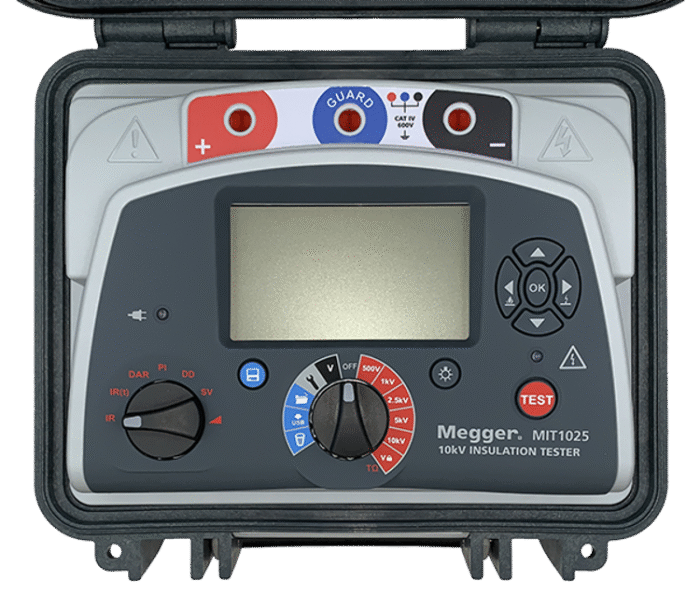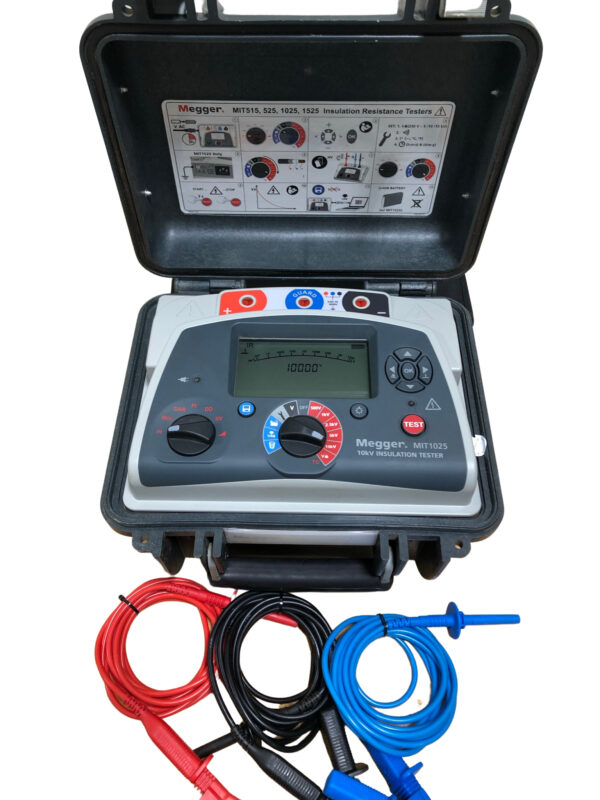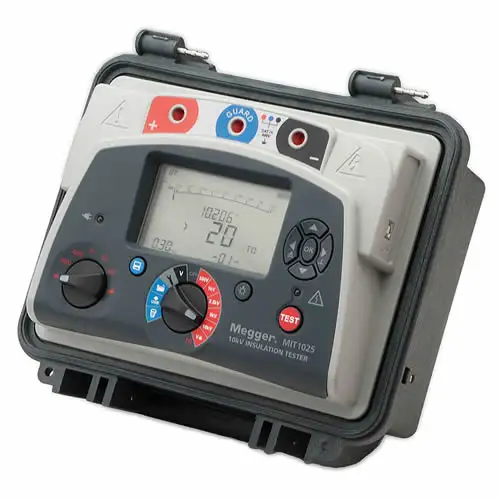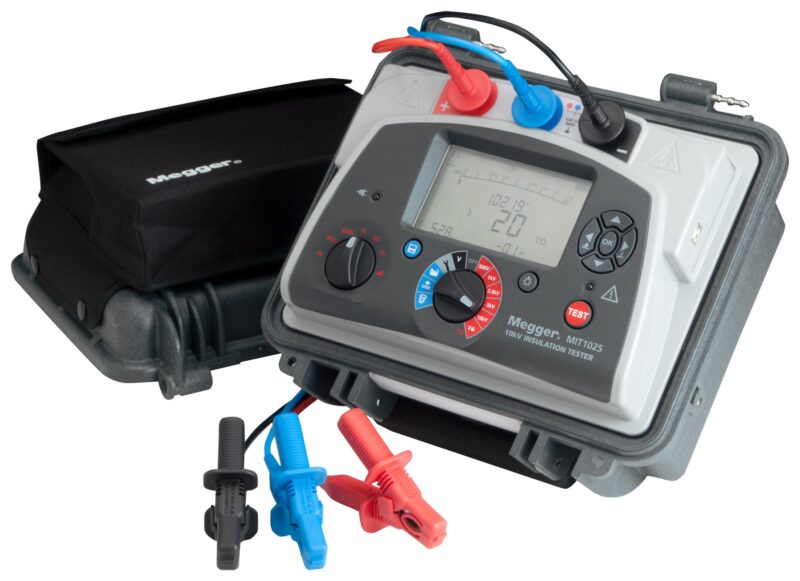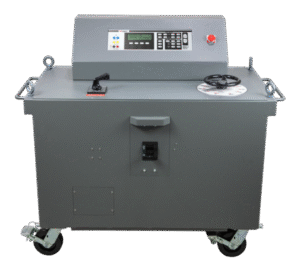The Megger MIT1025 is a 10 kV insulation resistance tester that is designed for the diagnostic testing and maintenance of high voltage electrical equipment. It is a compact and lightweight instrument that is easy to use and transport.
The MIT1025 is used by electrical engineers and technicians in a variety of industries, including power generation, transmission, and distribution; oil and gas; and manufacturing. It is used to test the insulation resistance of cables, transformers, switchgear, motors, and other electrical equipment.
Features:
Applications:
Benefits:
Resources:
Features:
The MIT1025 offers a number of advanced features, including:
- CAT IV 600V insulation resistance testing up to 20 TΩ
- Polarization index (PI) and dielectric absorption ratio (DAR) tests to identify early signs of insulation degradation
- Step voltage, dielectric discharge, and ramp tests to provide more detailed information about the condition of insulation
- Large, clear LCD display with real-time data and trend analysis
- USB port for exporting test results
Applications:
Here are some of the specific applications of the Megger MIT1025:
- Testing the insulation resistance of new and existing electrical equipment to ensure that it meets safety and reliability standards
- Identifying and locating insulation defects in electrical equipment
- Evaluating the effectiveness of maintenance and repair procedures
- Investigating the cause of electrical failures
- Complying with industry regulations
Benefits:
Here are some of the benefits of using the Megger MIT1025:
- Increased safety: The MIT1025 is CAT IV rated, which means that it can be used safely on energized electrical equipment.
- Improved efficiency: The MIT1025 offers a variety of advanced features that can save time and reduce the risk of human error.
- Enhanced accuracy: The MIT1025‘s PI and DAR tests can provide valuable insights into the condition of electrical insulation.
- Reduced downtime: The MIT1025 can help to identify and resolve insulation problems early on, before they cause equipment failure.
Resources:

